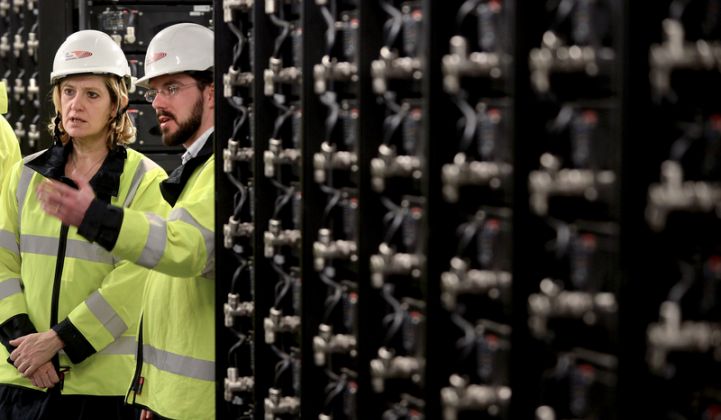German storage project developer Younicos is predicting big growth in Germany’s commercial and industrial (C&I) storage sector after the country broke records for solar-plus-storage installations.
“We now see C&I as one of our three key growth markets, in addition to utility-scale solar-plus-storage and microgrids,” said Younicos spokesperson Philip Alexander Hiersemenzel. “In the C&I space, we see demand for storage both with and without PV.”
Last month, Speicher Monitoring, which details the results of Germany’s residential storage subsidy program, published a report showing that 41 percent of all new domestic solar installations last year were coupled with battery systems.
The figure, up from 14 percent in 2014, is thought to be the highest in the world. And those figures do not include solar-plus-storage installations outside the subsidy scheme operated by the government-owned KfW development bank.
Part of the percentage increase is likely due to a drop in total solar installations across Germany last year. According to GTM Research’s Q2 2016 edition of the Global Solar Demand Monitor, PV demand dropped to 1.4 gigawatts in 2015, from 1.9 gigawatts in 2014.
But total installation numbers are also growing. GTM Research expects the German storage market to increase by nearly 100 megawatts this year, with distributed systems making up the majority of capacity.
The KfW data shows 19,328 residential solar installations were coupled with government-supported battery systems last year, which represents almost 45 percent of all the 43,000 solar-plus-storage support applications approved by the development bank since 2013.
Hiersemenzel said Younicos is now readying for a similar explosion in solar-plus-storage within the C&I segment.
“Many C&I customers see the falling cost of PV and batteries and would like to become greener, which includes getting more of their power from renewable energy sources,” he said. “Before storage, C&I customers were forced to either feed in most of their PV or limit it to a fraction of their actual energy needs. Now, however, they can economically use a much larger share of their self-produced power and use storage to shift the power load.”
The primary benefit of installing solar-plus-storage is to cut annual energy bills, but C&I businesses may also be able to take advantage of storage in other ways.
One is by competing in the ancillary services market to create new revenue streams, although, said Hiersemenzel, “Regulations often do not allow you to provide system services if you're behind the meter.”
Another potentially easier way of making money from storage might be through demand-charge reduction.
Hiersemenzel said the mere cost of being connected to the German grid can be as high as €75,000 ($83,000) a year for each megawatt of installed capacity, regardless of how often it is used.
Since many industrial energy users must allow for significant peaks in demand, there is a good chance much of the capacity they are paying for goes unused for long periods. Deploying storage, with or without PV, could allow users to reduce the grid capacity they need.
If C&I solar-plus-storage ends up mirroring the distribution for residential systems, then there could be a strong regional component to installations.
Last year, for example, almost 16 percent of installations were in Bavaria, the affluent state that occupies a fifth of the country in Germany's southeast region. A further 9 percent of installations were in highly industrialized North Rhine-Westphalia, on Germany’s western edge.
Two other states in the west, Baden-Württemberg and Lower Saxony, amassed 12 percent of installations between them, while the northeast of the country saw relatively few systems installed.
There is no doubt that C&I customers are aware of the benefits of deploying PV; the Global Solar Demand Monitor estimates the commercial sector will amount to 45 percent of all demand this year, with industrial customers accounting for a further 15 percent.
The main thing that might hold back the deployment of storage for now is that, according to the German Industrial Energy and Power Federation (Verband der Industriellen Energie- und Kraftwirtschaft), electricity prices are at a 10-year low for medium-voltage customers.
As GTM Research’s newly released The German Energy Storage Market 2016-2021 report states, “Large industrial electricity customers often qualify for exemptions from all or part of electricity taxes, levies and fees, such as the renewable energy surcharge. This significantly reduces the economic case of energy storage for large industrial electricity customers, as electricity prices do not act as a driver for this segment.”
These exemptions do not apply to smaller C&I customers, however. And with battery prices plummeting, low grid prices might not prove a major disincentive for C&I customers to delay installing storage much longer.
"The non-residential market will growth from a paltry $7 million/€6 million in 2015 to $146 million/€131 million in 2021," concludes the report.



